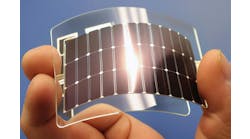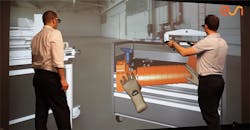You've heard of Pokemon Go by now, yes? It's the pervasively viral, madness-inducing, privacy-invading, weirdly alarming, metaphysically destabilizing new mobile-phone game from Niantic. It's potentially worth $1.8 billion a year. And it just may herald an important technological shift.
Conceptually, the app is fairly simple. Looking through their phones, gamers can see Pokemon characters superimposed on the world around them. The idea is to "catch" the creatures, and to pursue different varieties. The kids love it.
LONDON, ENGLAND - JULY 15: A Raticate, a character from Pokemon Go, a mobile game that has become a global phenomenon, on July 15, 2016, in front of the gates of Downing St , London, England. The app lets players roam using their phone's GPS location data and catch Pokemon to train and battle.The game has added millions to the value of Nintendo, which part-owns the franchise. (Photo by Olivia Harris/Getty Images)
But it isn't just a game: It's a rudimentary use of something called augmented reality. Using cameras and sensors, more sophisticated AR can project computer-generated graphics on a user's field of vision, typically through specialized goggles or visors. It can also show what the user is seeing to remote collaborators, who can in turn manipulate what graphics are displayed.
For industry, that's a powerful combination. Factory workers are experimenting with headgear that displays safety alerts and instructions for machinery. Engineers are using the gadgets to help repair equipment. Rather than pore through technical manuals, they can peer through headsets that recognize what they're looking at and indicate what needs to be done. As such gear improves, it should cut costs, increase accuracy, save time and make workplaces safer.
It also seems likely to spread. Lockheed Martin is using AR to assemble fighter jets. One day, it may prove useful in hospitals or on construction sites. Microsoft's AR system, called HoloLens, was sent aboard the International Space Station, so that mission control might help with future repairs by dropping annotations into an astronaut's field of vision. Even for the technically inept, AR could simplify tasks like assembling furniture or fixing a flat.
In each case, AR's power is to project the limitless data of cyberspace onto the physical world. That will give people more information about their environment, new ways to manipulate it and a promising new venue for collaboration. In short, it will turn people into cyborgs, but in a good way.
Augmented reality could play a major role in engineering the plants and processes of the future.
Photo: ESI
For all that, Pokemon Go -- like its predecessor in awkward virtual-physical collisions, Google Glass -- suggests some looming conundrums. As with everything in the digital age, it will surely erode privacy. How might advertisers make use of such gear? And how do you keep everyone from wandering into traffic, getting robbed or falling off cliffs?
Those questions and many more will probably become more urgent as this thrilling, alarming technology takes off. Meantime, enjoy your weird game, Pokemon enthusiasts. You're playing with the future. And it should only get better from here.












